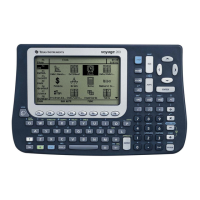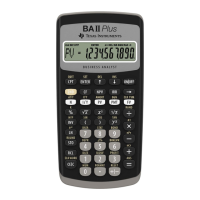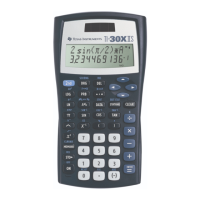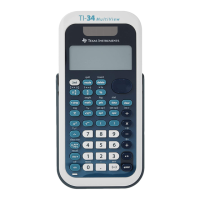Differential Equation Graphing 425
Defining a System for Higher-Order Equations
Defining a System for Higher-Order EquationsDefining a System for Higher-Order Equations
Defining a System for Higher-Order Equations
In the Y= Editor, you must enter all differential equations as 1st-order equations. If you
have an nth-order equation, you must transform it into a system of n 1st-order equations.
Transforming an Equation into a 1st-Order System
Transforming an Equation into a 1st-Order SystemTransforming an Equation into a 1st-Order System
Transforming an Equation into a 1st-Order System
A system of equations can be defined in various ways, but the following is a general
method.
1. Rewrite the original differential equation
as necessary.
a) Solve for the highest-ordered
derivative.
b) Express it in terms of y and t.
c) On the right side of the equation only,
substitute to eliminate any references
to derivative values.
Note: To produce a 1st-order equation,
the right side must contain non-derivative
variables only.
y'' + y' + y = e
x
y'' = e
t
N y' N y
y'' = e
x
N y' N y

